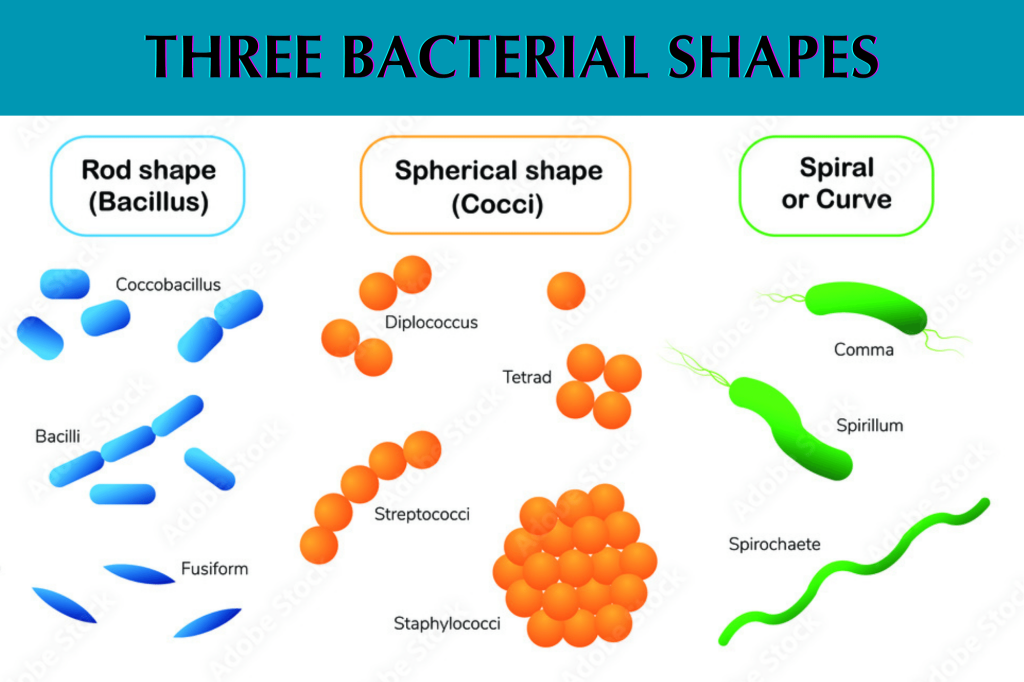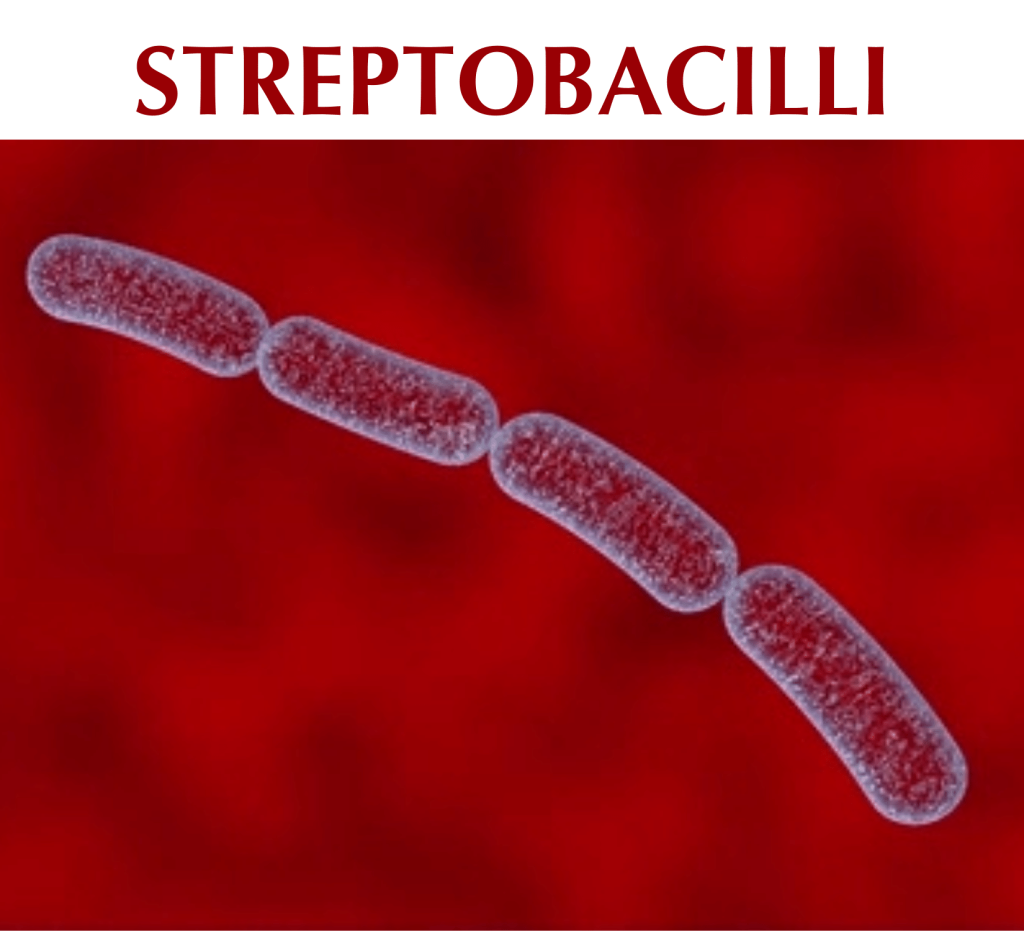KINGDOM PROKARYOTAE (MONERA)
FILL IN THE BLANKS
Q.01: Fill in the blanks:
(i) A bacterial arrangement in packets of eight cells is described as a _______. (sarcina)
(ii) The shape and arrangement of _______ is diplococci. (Diplococcus pneumoniae)
(iii) Pili are tubular shafts in bacteria that serve as a means of _______. (attachment)
(iv) _______ are unusual type of bacteria that live in extreme habitats. (archaeobacteria)
(v) _______ is a bacterium that is photosynthetic. (green sulphur bacteria)
(vi) _______ is a cyanobacterium. (Nostoc)
(vii) _______ called as bloom forming organism. (Cyanobacteria)
(viii) Use of antibiotics is one of the means of controlling _______ diseases. (bacterial)
MULTIPLE CHOICE QUESTIONS
Q.02: Each question has four options. Encircle the correct answer.
(i) Which of the followings is not found in all bacterial cells?
(a) Cell membrane
(b) Ribosomes
(c) A nucleoid
(d) Capsule
ANSWER: (d) Capsule
EXPLANATION: All bacteria don’t contain capsules. However, most of them have, and are termed as encapsulated bacteria.
(ii) The major locomotory structures in bacteria are:
(a) Flagella
(b) Fimbriae
(c) Pili
(d) Cilia
ANSWER: (a) Flagella
EXPLANATION: Flagella are extremely thin, hair like appendages. They are from one to many in number in different types of bacteria. Their primary function is to help in motility. With the help of flagella, flagellate bacteria can also detect and move in response to chemical signals which is a type of behaviour called as Chemotaxis.
(iii) Which of the following is a primary bacterial cell wall function?
(a) Transport
(b) Support
(c) Motility
(d) Adhesion
ANSWER: (b) Support
EXPLANATION: Beneath the extracellular substances and external to cytoplasmic membrane cell wall is present. It is a rigid structure. It determines the shape of bacterium. Cell wall also protect the cells from osmotic lysis.
(iv) Which of the following is present in both gram positive and Gram-negative cell walls?
(a) An outer membrane
(b) Peptidoglycan
(c) Techoic acid
(d) Lipopolysaccharides
ANSWER: (b) Peptidoglycan
EXPLANATION: Gram positive bacteria, peptidoglycan is 50% of the dry weight of the cell wall, while in Gram negative bacteria it is about 10% of the dry weight of their cell walls.
(v) Mesosomes are internal extensions of the:
(a) Cell wall
(b) Cell membrane
(c) Chromatin body
(d) Capsule
ANSWER: (b) Cell membrane
EXPLANATION: The cell membrane invaginates into the cytoplasm forming structure called as mesosome. Mesosomes are in the form of vesicles, tubules or lamellae.
(vi) Bacterial endospores function in:
(a) Reproduction
(b) Protein synthesis
(c) Survival
(d) Storage
ANSWER: (c) Survival
EXPLANATION: Certain species of bacteria produce spores within the vegetative cells called endospores. They are metabolically dormant bodies and are produced at a late-stage of cell growth. Spores are resistant to adverse physical environmental conditions such as light, high temperature, desiccation, pH and chemical agents.
Q.03: SHORT QUESTIONS
(i)
(a) Name general characteristics that could be used to define the prokaryotes.
(b) Do any other microbial groups besides bacteria have prokaryotic cells?
(c) In what habitats are bacteria found? Give some general means by which bacteria derive nutrients
ANSWER:
(a) In Greek, the word Pro means “before” and karyon means “nucleus”. Prokaryotes can be defined by:
(1) The absence of a true nucleus
(2) Membrane-bound organelles such as mitochondria, Golgi bodies etc.
(3) Absence of cytoskeleton.
(b) Besides bacteria, cyanobacteria which are also known as blue green algae have prokaryotic cells.
(c) Habitat:
Bacteria are wide spread in their occurrence. They are found almost everywhere, in air, land, water, oil deposits, food, decaying organic matter, plants, man and animals. Some bacteria are always present and contribute towards the natural flora. Others are present in specific environments such as hot springs, alkaline/acidic soil, highly saline environments, in highly polluted soils and waters.
Nutrition:
Bacteria derive nutrients either heterotrophically or autotrophically. Heterotrophic bacteria are unable to synthesize their organic food from simple inorganic substances. They obtain their nutrients from dead organic matter or humus (Saprophytic bacteria) or from living host (parasitic bacteria).
Autotrophic bacteria synthesize their own food by photosynthesis (from CO2 and H2S in the presence of light and chlorophyll) or chemosynthesis (by oxidation of inorganic compounds).
(ii)
(a) List functions that the cell membrane performs in bacteria.
(b) What are mesosomes and some of their possible functions?
ANSWER:
(a) Functions of Cell Membrane in Bacteria:
(1) Cell membrane regulates the transport of proteins, nutrients, sugar and electrons or other metabolites.
(2) The plasma membranes of bacteria also contain enzymes for respiratory metabolism.
(b) Mesosomes: “The bacterial cell membrane invaginates into the cytoplasm forming structures called as mesosomes.” Mesosomes are in the form of vesicles, tubules or lamellae.
Functions of Mesosomes:
(1) Mesosomes are involved in DNA replication and cell division.
(2) Some mesosomes are also involved in export of exocellular enzyme.
(3) Respiratory enzymes are also present on the mesosomes.
(iii) What is unique about the structure of bacterial ribosomes?
ANSWER:
The unique thing about bacterial ribosomes is that they are smaller (70S) than eukaryotic ribosomes (80S).
(iv) Draw the three bacterial shapes.
ANSWER:

(v) Name a bacterium that has no cell wall.
ANSWER:
Mycoplasma is the bacteria without cell wall.
(vi) A Gram-stained discharge from an abscess shows cocci in irregular grape like clusters. What is the most likely genus of this bacterium?
ANSWER:
The description of cocci in irregular grape-like clusters is characteristic of the genus Staphylococcus. Staphylococcus bacteria are gram-positive cocci that commonly form clusters resembling grapes when observed under a microscope. Staphylococcus aureus is a specific species within this genus that is known to cause abscesses and various other infections in humans.
(vii) Draw an outline and label:
i) Streptobacilli
ii) Diplococci
iii) Staphylococci
ANSWER:



(viii) You observe a culture of predominantly round (presumably spherical) bacteria that though apparently fully divided, nevertheless have failed to separate, thus resulting in long chains of cells. What, generally, might you call such an arrangement?
ANSWER: The arrangement you describe, where round bacteria are observed in long chains due to incomplete cell separation after division, is referred to as “streptococci.” Streptococci are a type of bacteria that typically form chains or pairs.
(ix) Match the following descriptions with the best answer:
| COLUMN A | COLUMN B |
| (a) Division in one plane; cocci arranged in pairs | (a) Bacillus |
| (b) Division in one plane; cocci arranged in chains | (b) Streptobacillus |
| (c) Division in two planes; cocci arranged in a square of four | (c) Spirochete |
| (d) Division in one plane; rods completely separate after division. | (d) Spirillum |
| (e) Division in one plane; rods arranged in chains. | (e) Vibrio |
| (f) A comma shaped bacterium | (f) Streptococcus |
| (g) A thin, flexible spiral. | (g) Staphylococcus |
| (h) A thick, rigid spiral. | (h) Diplococcus |
| (i) Tetrad | |
| (j) Sarcina |
ANSWER:
CORRECT PAIRING:
| COLUMN A | COLUMN B |
| (a) Division in one plane; cocci arranged in pairs | (h) Diplococcus |
| (b) Division in one plane; cocci arranged in chains | (f) Streptococcus |
| (c) Division in two planes; cocci arranged in a square of four | (i) Tetrad |
| (d) Division in one plane; rods completely separate after division. | (a) Bacillus |
| (e) Division in one plane; rods arranged in chains. | (b) Streptobacillus |
| (f) A comma shaped bacterium | (e) Vibrio |
| (g) A thin, flexible spiral. | (c) Spirochete |
| (h) A thick, rigid spiral. | (d) Spirillum |
Q.04: Extensive Questions.
(i) Describe in detail the structure of bacterial cell wall, emphasizing Gram positive and Gram-negative properties.
ANSWER:
Consult textbook at page 87 — 88.
(ii) Write an account of different methods used for controlling microbes.
ANSWER:
Consult textbook at page 92 — 94.
(iii) Discuss the role of antibiotics and immunization in controlling bacterial diseases. What problem can arise due to misuse of antibiotics?
ANSWER:
Consult textbook at page 94.
(iv) Describe general characteristics of Cyanobacteria with special reference to Nostoc.
ANSWER:
Consult textbook at page 94 — 96.
(v) Write Notes on:
(a) Koch’s postulates (b) Shape of bacteria
(c) Flagella and pili (d) Growth in bacteria.
ANSWER:
(a) Koch’s Postulates:
Robert Koch formulated the ‘germ theory of disease’. He isolated typical rod-shaped bacteria with squarish ends (bacilli) from the blood of sheep that had died of anthrax. Then he discovered bacteria that caused tuberculosis and cholera. He formulated four postulates, which are the main pillars of the germ theory of disease:
1) A specific organism can always be found in association with a given disease.
2) The organism can be isolated and grown in pure culture in the laboratory.
3) The pure culture willproduce the disease when inoculated into susceptible animal.
4) It is possible to recover the organism in pure culture from experimentally infected animal.
(b) Shape of Bacteria:
Consult textbook at page 84 — 85.
(c) Flagella and Pili:
Consult textbook at page 86 — 87.
(d) Growth in Bacteria:
Consult textbook at page 90 — 91.
NOTE: Please go through these solutions and give your opinion about the quality of the work. You may also give suggestions to improve the contents. Thanks!

